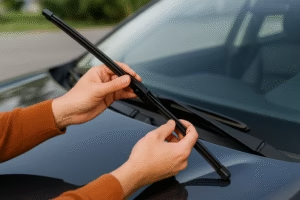Rubber tiles are a popular choice for flooring due to their durability, flexibility, and aesthetic appeal. However, one persistent challenge many homeowners and professionals face is ensuring rubber tiles stay firmly in place. If you’re searching for effective solutions to ensure rubber tiles don’t move, this comprehensive guide will provide you with the techniques, tools, and best practices you need. Whether in a gym, playroom, or outdoor area, stability is key to both safety and long-lasting results.
Introduction: Why Stability Matters
Rubber tiles provide a versatile and reliable flooring solution, but stability issues can undermine their benefits. Movement can lead to uneven surfaces, tripping hazards, and premature wear. Learning how to ensure rubber tiles don’t move is crucial for maintaining both functionality and appearance.
In this guide, we’ll explore the most effective methods to secure rubber tiles, whether you’re installing them in a high-traffic gym, a cozy playroom, or an outdoor patio. From choosing the right adhesives to exploring innovative interlocking systems, each section offers insights to keep your rubber tiles steady and secure. By the end of this article, you’ll have a thorough understanding of how to ensure rubber tiles don’t move in any setting.
Choosing the Right Rubber Tiles
Not all rubber tiles are created equal, and selecting the right ones is the first step to ensuring stability. Thicker, heavier tiles are less likely to shift, making them ideal for high-impact areas like gyms or garages. When shopping, look for tiles with textured undersides designed to grip the subfloor. This foundational choice is vital to ensure rubber tiles don’t move, even under heavy use.
Preparing the Subfloor
A stable subfloor is crucial for securing rubber tiles. Before installation, clean the surface thoroughly to remove dust, debris, or moisture. For uneven floors, consider using a self-leveling compound. These preparations create a smooth, stable base that helps ensure rubber tiles don’t move over time.
Using Adhesive
Adhesives are one of the most effective ways to ensure rubber tiles don’t move, particularly in permanent installations. Choose a high-quality, rubber-specific adhesive and apply it evenly across the subfloor. This method is especially useful for areas exposed to heavy foot traffic or equipment movement.
Exploring Interlocking Systems
Interlocking rubber tiles are designed for easy installation and enhanced stability. These tiles feature a puzzle-like design that snaps together securely, preventing movement. For those who want a non-permanent solution to ensure rubber tiles don’t move, interlocking systems are an excellent choice.
Incorporating Edge Trims
Edge trims not only enhance the appearance of your rubber tile flooring but also play a significant role in stability. By anchoring the outer edges of the tiles, trims help ensure rubber tiles don’t move, particularly in spaces where tiles might shift due to regular use.
Installing Underlayment
An underlayment provides an extra layer of grip between the subfloor and the rubber tiles. Materials like foam or felt create friction that helps ensure rubber tiles don’t move. Additionally, underlayments can improve soundproofing and insulation.
Maintaining the Environment
Temperature and humidity fluctuations can cause rubber tiles to expand or contract, leading to movement. Maintaining a consistent environment is key to ensure rubber tiles don’t move. Use dehumidifiers or climate control systems in spaces prone to extreme changes.
Securing Tiles with Double-Sided Tape
For temporary or semi-permanent installations, double-sided tape is a simple yet effective solution. Apply the tape along the edges and center of each tile to ensure rubber tiles don’t move during use.
Weighing Down Rubber Tiles
In areas like home gyms or outdoor patios, placing heavy objects on top of rubber tiles can help keep them in place. Weights or furniture act as natural anchors to ensure rubber tiles don’t move without requiring adhesives.
Regular Maintenance and Inspection
Routine maintenance plays a crucial role in long-term stability. Check for loose or shifting tiles regularly and address any issues immediately. By staying proactive, you can ensure rubber tiles don’t move and remain in optimal condition.
Conclusion: How to Ensure Rubber Tiles Don’t Move
Ensuring that your rubber tiles stay firmly in place is essential for safety, longevity, and overall satisfaction with your flooring. By following the strategies outlined in this guide, you can confidently tackle installation and maintenance challenges. From selecting the right tiles to incorporating adhesive or interlocking systems, each method is designed to help you ensure rubber tiles don’t move in any environment.
By staying proactive, addressing potential issues promptly, and using the right tools, you can enjoy the benefits of secure, stable rubber flooring for years to come.

Share this:
- Click to share on Facebook (Opens in new window) Facebook
- Click to share on X (Opens in new window) X
- Click to share on LinkedIn (Opens in new window) LinkedIn
- Click to share on Reddit (Opens in new window) Reddit
- Click to share on X (Opens in new window) X
- Click to share on Threads (Opens in new window) Threads
- Click to share on WhatsApp (Opens in new window) WhatsApp




